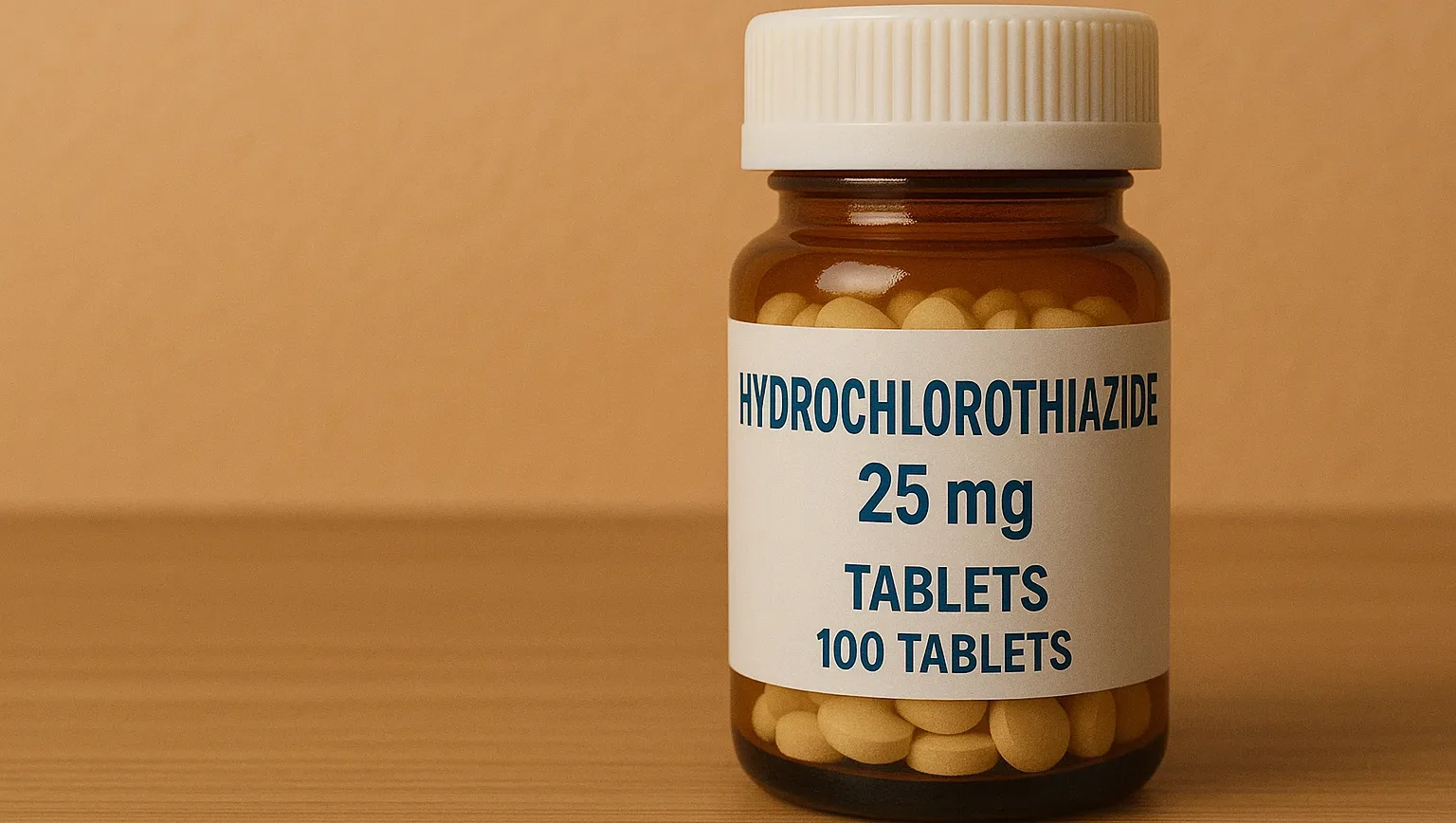Hydrochlorothiazide is a thiazide diuretic used to manage hypertension and edema by increasing sodium and water excretion.
Structure of Hydrochlorothiazide
- Hydrochlorothiazide is a thiazide diuretic similar to chlorthiazide but with a hydrochloride salt form to enhance solubility.
- Chemical Formula: C₇H₇ClN₃O₄S₂·HCl

Mode of Action
- Thiazide Receptor Blocking: Inhibits the sodium-chloride symporter in the distal convoluted tubule.
- Sodium and Chloride Excretion: Promotes diuresis by increasing excretion of sodium and chloride ions.
- Potassium Loss: Enhances potassium and hydrogen ion excretion, potentially causing hypokalemia and metabolic alkalosis.
Uses
- Hypertension: Widely used as a first-line agent to manage essential hypertension.
- Edema: Treats edema associated with congestive heart failure, liver cirrhosis, and renal disorders.
- Nephrolithiasis Prevention: Aids in preventing calcium-containing kidney stones.
- Heart Failure: Part of diuretic therapy to reduce fluid retention.

